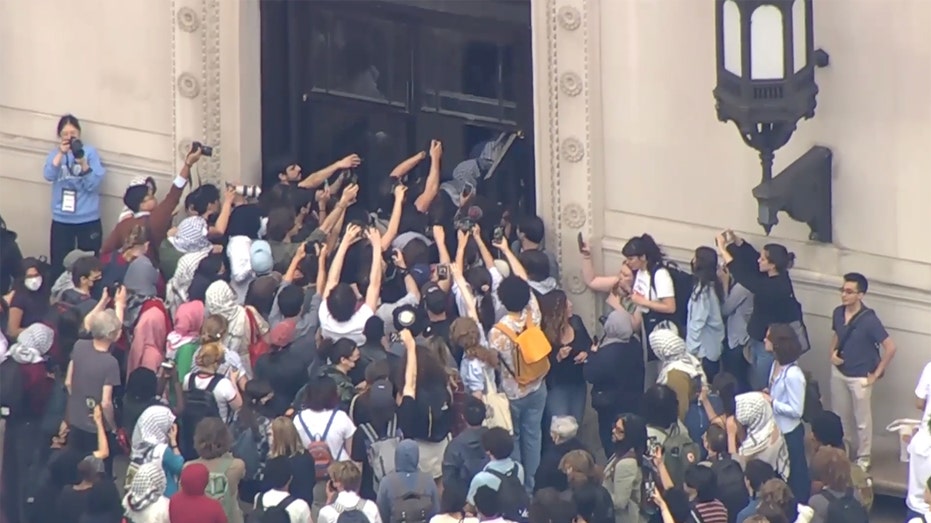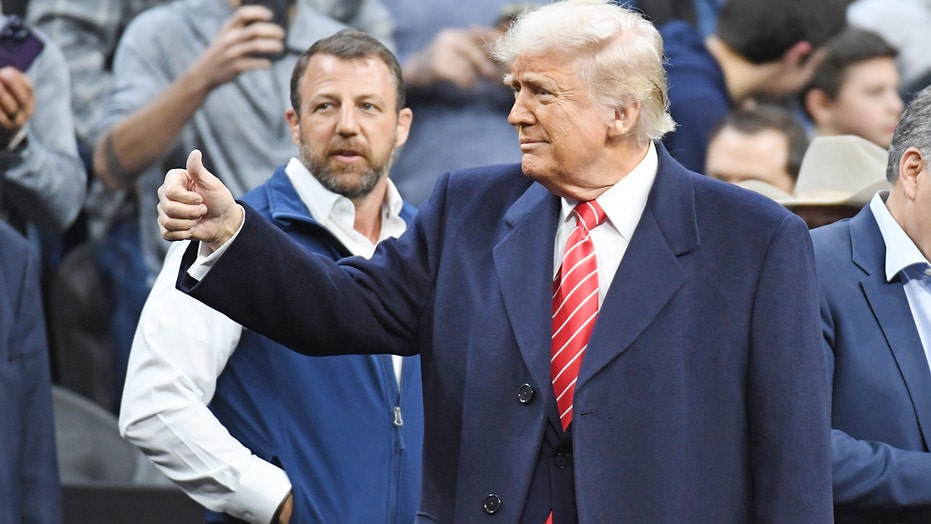Why Rice Is a Sticking Point in U.S.-Japan Trade Talks
What happens when negotiations over Trump’s tariffs collide with another nation’s domestic politics?


In Japan, the ruling government is weighing whether or not to put rice on the table.
President Donald Trump’s tariffs have forced countries around the world—most recently announced, China—to take a seat in negotiations to try to work out an agreement to avoid Trump’s costly, and in many cases seemingly arbitrary, levies on foreign imports. But what concessions each side is willing or able to make is largely dependent on local politics. [time-brightcove not-tgx=”true”]
Read More: Why China Laughs at the Idea of Americans Taking Their Manufacturing Jobs
Japan faces a “reciprocal” tariff as high as 24% if it isn’t able to negotiate it down, and its automobile and metals industries, two of its key sectors, are being tariffed at an additional 25% each. What the Trump Administration wants in turn from its East Asian trading partner is for Japan to import more agricultural products, including rice. The Trump Administration has described Japan’s domestic protectionist policies for the rice industry as “highly regulated and nontransparent.”
How the trade talks ultimately go could have far-reaching consequences on Japan’s ruling government, its economy, or both. And navigating those negotiations will be no easy task.
Competing pressures
“Rice has always been highly protected and shielded from trade negotiations. Its liberalization is a political taboo for the LDP,” says Waseda University Professor Yuka Fukunaga.
“Look at Japan, tariffing rice 700%,” White House Press Secretary Karoline Leavitt said at a press briefing in March. “President Trump believes in reciprocity, and it is about dang time that we have a President who actually looks out for the interest of American business and workers.”
That 700% figure, which Japan’s farm minister called “incomprehensible,” is not quite true. In 1995, after facing a rice crisis in 1993 and mounting pressure from the world to open up its rice market, Japan entered into a “minimum access” deal with the World Trade Organization. That means that Japan imports 770,000 metric tons of rice each year without any tariffs, around half of which comes from the U.S. most years. Above that quota, Japan imposes a tariff of ¥341 (about $2.30) per kilogram. (In 2005, Japan’s farm ministry showed that was equivalent to a 778% tariff based on international rice prices between 1999 and 2001, but more recent data suggests the tariff is around 227%, according to a calculation by the Japan Times.)
Regardless of the numbers, the pressure of negotiating with the U.S. is putting a spotlight on an ongoing rice crisis in Japan and spurring the possibility of a policy shift for a market historically reluctant to change.
The plurality Liberal Democratic Party, which has long led Japan, has firmly opposed a proposal within its government to raise a special quota for American rice imports.
But the government doesn’t just face pressure from the U.S. It also faces competing domestic interests as Japanese consumers struggle with soaring rice prices due to rice shortages and policies protecting its local farmers, while farmers remain an important political demographic. The LDP is in a particularly precarious position as it faces an Upper House election this summer after having lost its majority in parliament last year amid a number of scandals.
“Rice is arguably the last agricultural product the Japanese government is willing to liberalize,” Professor of Economics at Tokyo’s Gakushuin University Hiroshi Mukunoki tells TIME. “That said, I believe the tide may be turning.”
Japan’s most politicized crop
Why rice market reform is so taboo has more to do with the political importance of the farm vote than the economic importance of Japan’s agricultural sector.
Agriculture makes up around 1% of Japan’s GDP. But nearly every Japanese farmer is a member of the Japan Agricultural Cooperatives, an association started by the Japanese government to regulate the industry but that also lobbies for farmers’ interests. JA has historically been successful in organizing the farm vote for LDP candidates who push for higher rice prices—which, prior to 1995, were set by the Japanese government.
Since the partial liberalization of the market in 1995, which let rice prices be determined by supply and demand but artificially limited supply, the power of the organized farm vote has waned slightly, but “it can still make or break candidates in rural constituencies,” says Hanno Jentzsch, an associate professor at the University of Vienna who specializes in Japanese agricultural reform. Those candidates “are still very much interested in having the farming community behind them”—and those are the lawmakers pushing hardest against the proposal to liberalize rice, Jentzsch says.
With the coming Upper House election this summer, the LDP may be reluctant to alienate its rural voter base. “The LDP government will fall if they lay their hands on rice,” one party member who represents farmers told Nikkei Asia. A resolution penned by LDP members called on the government to “go into the [tariff] talks with the firm stance that [Japan] will protect what needs to be protected.” Itsunori Onodera, chairperson of the LDP’s Policy Research Council, reportedly told Ryosei Akazawa, Japan’s chief negotiator in the trade talks, that the country “must never make any concessions on rice.”

How prior protectionism may have backfired
The government continues to indirectly influence the price of rice through a policy called gentan seisaku. The policy was first introduced in the 1970s as a means to essentially pay farmers to produce less rice. While the policy was officially lifted in 2018, the government continues to provide subsidies to farmers who reduce the amount of acreage used for rice production and instead use that land to produce other crops, like soybeans. The Japanese government also publishes annual demand estimates and a target for rice production.
The idea behind it is to curb the oversupply of rice, in order to indirectly, but nevertheless artificially, ensure rice prices remain relatively high. That has led to less and less rice produced each year as the diets of Japanese consumers overtime have expanded to other staples like bread and potatoes.
But the policy meant to protect farmers, combined with other factors including extreme weather, has led to a rice shortage since last year. Consumers have faced empty supermarket shelves and a nearly 90% surge in prices.
Last month, Japan imported rice from South Korea for the first time since 1999. And the government has also begun releasing more than a fifth of its emergency reserves of rice—a stockpiling policy that began in 1995—to meet demand, a move that Jentzsch says signals a rising concern around food security. “Everybody eats rice,” Jentzsch says. “If you can’t afford rice, then, beyond the large-scale considerations of national security … food security now also becomes a matter of social security.”
The government is aiming to increase Japanese rice exports in order to bolster domestic production without causing prices at home to plummet. But that’s a difficult balance to draw in trade talks.
Also in April, rice farmers drove tractors through the streets of Tokyo and held up placards reading “NO RICE NO LIFE” in a rare protest. High prices don’t necessarily mean high incomes for farmers, says Jentzsch, rather it’s mainly due to high production costs. A majority of Japan’s farmers are part-time farmers who work small plots of land. A record number of farmers went bankrupt or closed their farms in 2024, with more than 60% of them being in their 70s or older, according to Teikoku Data Bank. And climate change has worsened productivity levels: harvests fell in 2023 after a heat wave in 2023—which rose again last year in the country’s hottest year since 1898.
Jentzsch says there’s a limit to how much rice Japan can produce given its mountainous landscape. Many farmers have also come to rely on the subsidies given to farming other crops, which makes scrapping those too quickly also politically risky.
It’s a precarious situation, Jentzsch says. “Technically, if every Japanese rice farmer would grow rice, there would be more than enough rice, but the Japanese government has been using production targets and subsidies to prevent overproduction and price drops that could hurt rice farmers. Over the past few years, however, the management of supply and demand has become less reliable.”
Trade talks could spur reform
Some economists suggest pressure from the U.S. could actually push Japan toward long-overdue reform.
Economist Tatsuo Hatta, president of the Asia Growth Research Institute, says opening up Japan’s rice market would benefit consumers. “It’s rational to liberalize more on rice imports. The LDP might resist, but on the other hand, they can now have an excuse—that is, pressure by the United States,” he says. “Of course, farmers don’t like it, but there are ways to compensate [them].”
“The fact that the productivity is lower than the United States on both fronts is really the result of political intervention in the market,” says Hatta. If Japan is able to use rice imports as a bargaining chip to lower American tariffs on its much bigger automobile industry, Hatta adds, “both countries will benefit: the U.S. can purchase a cheap Japanese car, and Japan can purchase cheap rice from the United States.”
Aging farmers have waning political influence, too, says Hatta. The government’s “slow and ineffective policy response” to the rice crisis, says Mukunoki, has “frustrated many households.”
“There is a growing view in Japan that sustaining rice production will require bold policy reform. In this context, U.S. demands could potentially serve as a catalyst for long-overdue changes in Japan’s agricultural sector,” Mukunoki adds.
Others, though, warn that change could also backfire.
“Allowing U.S. agricultural imports into Japan would be disastrous. This is a short term deal,” says Mark Cogan, associate professor of peace and conflict studies at Japan’s Kansai Gaidai University, explaining that U.S. trade policy is fickle but Japan’s response could have lasting consequences. “Long term,” says Cogan, relying on imports rather than domestic production for rice isn’t just about politics, “it’s a food security issue.”
Jentzsch also concedes that U.S. imports could bring short-term relief to high rice prices, but he adds that in the long-term the health of Japan’s rapidly aging farm sector would suffer. “More imported rice means even less incentives for Japanese farmers to grow rice,” he says. “Taking agriculture out of these talks economically is not going to hurt the U.S. or Japan much. … I don’t really see what the U.S. is going to lose if they would just say, ‘let’s focus on other things we can trade.’”
“It’s a matter of identity, too,” says Jentzsch, who is not convinced that Japanese consumers would even want to buy American rice. “It’s also sort of symbolic for Japanese agriculture,” he adds. “Saying ‘let’s not grow rice anymore in Japan,’ culturally and socially, is very hard to communicate.”
Hatta isn’t so certain that Japanese consumers will see their grocery shopping, especially for a staple product, as a form of patriotic duty: “If good quality rice is imported from anywhere in the world, Japanese consumers will buy it.”










![[DEALS] The Premium Python Programming PCEP Certification Prep Bundle (67% off) & Other Deals Up To 98% Off – Offers End Soon!](https://www.javacodegeeks.com/wp-content/uploads/2012/12/jcg-logo.jpg)




































































